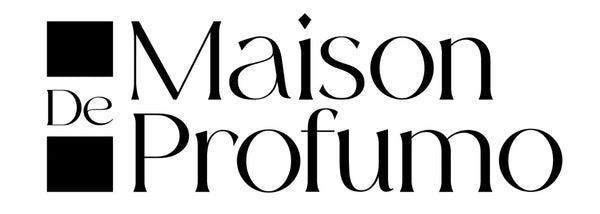"How to Choose the Perfect Perfume: A Comprehensive Guide"
Introduction
Choosing the right perfume can be a deeply personal and sometimes daunting task. With countless options available, finding a fragrance that perfectly complements your personality, style, and preferences can seem overwhelming. This comprehensive guide will walk you through the process of selecting the ideal perfume, covering essential factors, fragrance families, and practical tips to help you make an informed decision.
Understanding Fragrance Families

Fragrance families categorize perfumes based on their dominant olfactory characteristics. Understanding these families can significantly narrow down your options and guide you towards a scent that resonates with you.
1. Floral
- Overview: The most popular fragrance family, floral scents are characterized by their fresh, sweet, and romantic aromas. They are often composed of a single flower or a bouquet of different floral notes.
- Key Notes: Rose, jasmine, lily of the valley, peony, gardenia.
-
Examples:
- Chanel No. 5
- Viktor & Rolf Flowerbomb
- Gucci Bloom
2. Oriental
- Overview: Oriental fragrances are warm, exotic, and sensual, often featuring rich and spicy notes combined with sweet and resinous elements.
- Key Notes: Vanilla, amber, cinnamon, cloves, incense.
-
Examples:
- Yves Saint Laurent Opium
- Tom Ford Black Orchid
- Guerlain Shalimar
3. Woody
- Overview: Woody fragrances are earthy and robust, with dominant notes derived from woods and mosses. They exude sophistication and timelessness.
- Key Notes: Sandalwood, cedarwood, vetiver, patchouli, oakmoss.
-
Examples:
- Dior Sauvage
- Le Labo Santal 33
- Creed Aventus
4. Fresh
- Overview: Fresh fragrances are light, clean, and invigorating, often incorporating citrus, green, and aquatic notes.
- Key Notes: Lemon, bergamot, mint, green tea, sea breeze.
-
Examples:
- Dolce & Gabbana Light Blue
- Issey Miyake L'Eau d'Issey
- Calvin Klein CK One
5. Fougère
- Overview: Fougère, meaning "fern" in French, typically combines fresh, herbal, and woody notes, creating a masculine and classic scent profile.
- Key Notes: Lavender, oakmoss, coumarin, bergamot, geranium.
-
Examples:
- Houbigant Fougère Royale
- Paco Rabanne Pour Homme
- Drakkar Noir
6. Gourmand
- Overview: Gourmand fragrances are delectable and mouth-watering, featuring edible notes such as vanilla, caramel, chocolate, and coffee.
- Key Notes: Vanilla, caramel, chocolate, honey, praline.
-
Examples:
- Thierry Mugler Angel
- Yves Saint Laurent Black Opium
- Prada Candy
Factors to Consider When Choosing a Perfume

1. Personal Preferences
- Scent Profile: Determine which fragrance families appeal to you the most.
- Strength and Longevity: Decide whether you prefer light, subtle scents or strong, long-lasting fragrances.
2. Skin Chemistry
- Understanding Skin Chemistry: Perfumes can smell different on various skin types due to factors such as pH levels and skin moisture.
- Testing on Skin: Always test a perfume on your skin before purchasing to see how it interacts and evolves over time.
3. Occasion and Season
- Occasion: Choose perfumes that suit the occasion. Lighter, fresher scents are ideal for daytime and casual settings, while richer, more intense fragrances are better for evenings and special events.
- Season: Seasonal changes can influence how a fragrance performs. Fresh and floral scents are perfect for spring and summer, while woody and oriental notes are more suitable for fall and winter.
4. Concentration
- Eau de Parfum (EDP): Contains 15-20% perfume oil, offering a strong and long-lasting scent.
- Eau de Toilette (EDT): Contains 5-15% perfume oil, providing a lighter and more subtle fragrance.
- Eau de Cologne (EDC): Contains 2-4% perfume oil, ideal for a light and refreshing scent.
- Parfum: Contains 20-30% perfume oil, the most concentrated and long-lasting option.
Practical Tips for Selecting the Right Perfume
1. Sample Before You Buy
- Sample Kits: Many brands offer sample kits that allow you to try multiple scents before committing to a full bottle.
- Store Testing: Visit a store and test perfumes on your skin. Allow them to dry down to understand the full scent profile.
2. Understand Fragrance Notes
- Top Notes: The initial impression of the fragrance, usually lasting for the first 15-30 minutes.
- Heart Notes: The core of the fragrance, emerging after the top notes dissipate and lasting for several hours.
- Base Notes: The foundation of the fragrance, providing depth and lasting the longest.
3. Seek Recommendations
- Friends and Family: Ask for recommendations from people whose taste you trust.
- Online Reviews: Read reviews from reputable sources and customers to gain insight into the performance and appeal of different perfumes.
4. Take Your Time
- Don’t Rush: Give yourself time to explore and test various options.
- Seasonal Changes: Revisit perfumes in different seasons to see how they perform under varying conditions.
Conclusion
Selecting the right perfume is a journey of self-discovery and personal expression. By understanding fragrance families, considering key factors, and following practical tips, you can find a scent that perfectly aligns with your personality and lifestyle. Embrace the process, trust your instincts, and enjoy the transformative power of a well-chosen fragrance.

